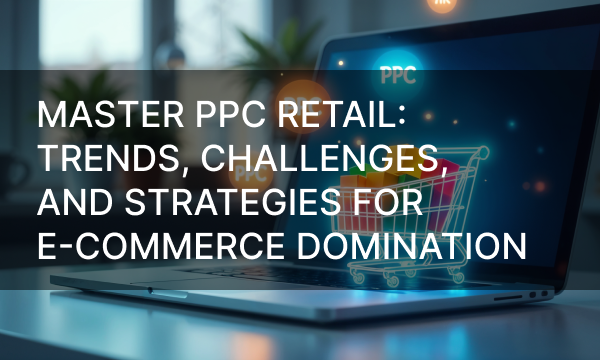Introduction
Are you looking at your website analytics and feeling like your conversion rate isn’t where it should be? Do you know you have a great product but struggle to turn window shoppers into purchasers? Many eCommerce businesses face the challenge of optimizing their conversion rates.
In the dynamic world of eCommerce, driving traffic to your online store is only half the battle. While attracting visitors is crucial, the real victory lies in converting that traffic into paying customers. A high conversion rate is the lifeblood of any successful online business, transforming website browsers into loyal buyers and maximizing your ROI. A healthy conversion rate signifies that your traffic is translating into sales, but when visitors abandon their carts without completing a transaction, it signals the need for optimization. There are concrete steps you can take to elevate your conversion rate and transform casual browsers into dedicated customers.
This guide provides a complete roadmap to understanding and improving your eCommerce conversion rate, offering actionable strategies, proven tactics, and essential tools to transform your online store into a customer-centric conversion machine. From optimizing your product pages to streamlining the checkout process, we’ll explore every critical aspect of the customer journey, empowering you to maximize sales and achieve sustainable growth. Prepare to unlock the untapped potential of your online store and turn your website into a conversion powerhouse.
eCommerce Conversion Rate
In eCommerce, the conversion rate is a key indicator of success, revealing how effectively your website turns visitors into customers. It measures your site’s ability to motivate users to take action, such as making a purchase, subscribing, or adding items to their cart. To maximize this rate, attracting the right audience is essential. Strong SEO is critical to achieve this by increasing your store’s visibility to potential customers actively searching for your products or services. This targeted approach improves traffic quality, driving genuinely interested users who are more likely to convert.
eCommerce Conversion Rates Benchmarks
E-commerce conversion rates, which measure the percentage of website visitors who make a purchase, are a critical indicator of online business success. While typical conversion rates range from 1.84% to 3.71%, top-performing businesses frequently achieve 6.25% or more. Benchmarking your conversion rate against these figures is essential for establishing realistic targets and pinpointing opportunities for optimization. If your rate is below average, there’s no need to worry; various techniques can be used to improve your site’s effectiveness and increase sales.
How to Identify Barriers that Prevent eCommerce Conversions
To increase eCommerce conversions, identify the reasons why visitors aren’t buying. Understanding these obstacles allows you to strategically focus your optimization efforts where they will have the greatest impact. Without identifying conversion roadblocks, your efforts may be wasted. Common problems include technical issues, confusing website navigation, a lack of trust indicators, and a difficult checkout experience.
How to Identify Barriers that Prevent eCommerce Conversions
To increase eCommerce conversions, identify the reasons why visitors aren’t buying. Understanding these obstacles allows you to strategically focus your optimization efforts where they will have the greatest impact. Without identifying conversion roadblocks, your efforts may be wasted. Common problems include technical issues, confusing website navigation, a lack of trust indicators, and a difficult checkout experience.
1. Slow Website Loading Speeds
Slow website loading speeds are detrimental to online success. Research indicates a strong link between speed and conversions: a site loading in one second can see conversion rates 250% higher than a site taking five seconds. This delay directly impacts sales and revenue. Identifying and fixing the causes of slow loading is possible. Resources such as Google PageSpeed Insights offer actionable information, helping you identify specific performance bottlenecks, implement targeted improvements, and ultimately increase profitability.
2. Poor Mobile Optimisation
Mobile devices now dominate eCommerce, driving over half of all online store traffic. This makes a strong mobile experience critical. A poorly designed mobile site will almost certainly drive customers away. Therefore, prioritizing mobile-first design is essential, not just an option. Test your site’s mobile-friendliness with tools like Google’s Mobile-Friendly Test, and continually optimize by focusing on responsive design, fast loading times, and easy navigation. These improvements will lead to a better user experience, increased traffic, and higher conversion rates.
3. Confusing Navigation or Complex Checkout Processes
Lost sales often stem from frustrating website navigation and complicated checkout procedures. Customers struggle to find desired products when faced with poorly designed menus or ineffective search tools, leading to frustration and site abandonment. Likewise, complex checkout processes frequently cause shoppers to abandon their carts. These obstacles create friction, driving customers to seek smoother buying experiences elsewhere. You can combat this by tracking bounce rates and abandoned cart data, as well as analyzing user feedback to pinpoint and resolve these issues, simplifying both navigation and checkout, ultimately boosting conversion rates and customer satisfaction.
4. Lack of Trust Signals
Lack of trust is a major obstacle to online sales. Customers are hesitant to share payment details with websites that appear unreliable. This hesitation stems from missing trust signals such as visible security badges (like SSL certificates), a clear and accessible refund policy, and genuine customer reviews. Scrutinize your product pages and checkout process for areas where trust is weak. Addressing these weaknesses by implementing trust-building measures – actively gathering and displaying customer reviews, for example, or prominently showcasing security certifications – can dramatically increase buyer confidence and drive higher conversion.
5. Inadequate Product Information
Insufficient product information severely hinders online sales conversions. Potential customers need detailed descriptions, compelling visuals, and authentic reviews to feel confident in their purchase. When these elements are missing, doubt arises, and shoppers often abandon their carts. Regularly auditing product pages from the customer’s viewpoint is essential to ensure clarity, comprehensiveness, and trustworthiness. Comprehensive product information is vital for transforming online browsing into successful sales.
7 Actionable Strategies to Boost Your Average eCommerce Conversion Rates
 Photo by Mark König on Unsplash
Photo by Mark König on Unsplash
We’ve outlined practical, readily implementable strategies that tackle the common issues hindering purchases. Follow these step-by-step solutions to refine your customer’s journey, make it more compelling, and guide them seamlessly from browsing to buying. With focused implementation, you should see a measurable increase in your conversion rates.
1. Optimise Website Performance
Speed Up Loading Times:
- Compress images using tools like TinyPNG or ImageOptim
- Minify CSS, JavaScript, and HTML to reduce file sizes and improve load times
- Implement browser caching and use a Content Delivery Network (CDN) to serve content faster to users worldwide
Mobile Optimisation:
- Ensure fonts are legible and buttons are easily clickable on mobile screens
- Remove unnecessary pop-ups or intrusive elements that disrupt the mobile experience
- Test your site using real devices for responsiveness and speed
2. Enhance User Experience
Simplify Navigation:
- Organise your menu by creating intuitive categories
- Use predictive search: Tools like Algolia enable auto-suggestions, helping customers find products faster
Streamline Checkout Processes:
- Guest checkouts: Allow customers to buy without forcing them to create accounts. Post-purchase, offer account creation as an option.
- Use progress indicators: Show how many steps remain in the checkout process, reducing anxiety.
- Offer flexible payment options: Include popular choices like PayPal, Apple Pay, and Klarna.
Write Clear CTAs:
- Actionable language: Replace generic phrases like “Learn More” with specific actions like “Add to Cart”, “Claim Your Discount”, or “Start Free Trial”.
- CTA placement: Ensure CTAs are above the fold, visible without scrolling, and repeated strategically throughout the page.
3. Build Trust with Customers
Display Social Proof:
- Integrate widgets like Trustpilot or Yotpo to show user-generated reviews.Include images or videos for authenticity.
- Displaying customer reviews prominently on your site can significantly boost trust and conversions.
- Keep loyal customers with a referral solution like Loyoly to boost acquisition with recommendations from peers.
- User-generated content: Encourage buyers to share photos of themselves using your products on social media and display these on your site.
Make Policies Transparent:
- Refund policies: Highlight them in FAQs and product pages. Use simple language like “Hassle-Free Returns Within 30 Days”, and partner with reliable couriers to ensure smooth returns.
- Contact information: Add a visible “Contact Us” button with phone numbers, emails, or live chat options.
4. Improve Product Pages
Add High-Quality Visuals:
- High-resolution images: Show products from multiple angles and in real-life scenarios. Use 360-degree image viewers where possible.
Product videos: Create 20–30-second clips demonstrating how the product works or looks to increase purchase likelihood up to 85%.
Write Benefit-Driven Descriptions:
- Focus on the outcome: Instead of “Ergonomic design”, write, “Feel pain-free comfort all day with our ergonomic design”.
- Use bullet points: Make scanning the key benefits and features easy.
Create Urgency:
- Countdown timers: Use plugins like Countdown Timer Ultimate to highlight limited-time deals.
- Stock indicators: Display phrases like “Only 5 left in stock – order soon!”
5. Leverage Personalisation
Offer Customised Recommendations:
- AI-driven suggestions: Use tools like Dynamic Yield to recommend products based on browsing history.
- Customised emails: Send personalised emails with phrases like, “We noticed you loved [Product Name]. Here’s something similar!”
Recover Abandoned Carts:
- Send cart reminders: Use email marketing tools like Klaviyo to send reminders within 1-3 hours.
- Add incentives: Offer a discount or free shipping to encourage completion.
6. Test and Optimise Regularly
Run A/B Tests:
- Headline wording, CTA placement, or image choices. Use tools like Optimizely to streamline testing.
Use Heatmaps and Analytics:
- If users drop off before reaching the cart, optimize product descriptions or offer clearer CTAs.
7. Tracking and Sustaining Growth
It’s important to track how well your implemented marketing strategies are working and ensure continued success. Here’s how you can do that:
- Set realistic goals: Set measurable goals to keep you focused and motivated.
- Monitor metrics: Use tools like Google Analytics to track key metrics such as conversion rates, cart abandonment, and bounce rates.
- Adapt and evolve: Review your strategies and test new ideas. Listen to customer feedback and adjust your approach to stay on track.
How to Use Marketing to Drive Conversions
Marketing plays a key role in turning visitors into customers. Here are some easy ways to boost conversions:
- Email marketing: Send personalized emails based on users’ previous activities. Offer special deals to new customers or repeat buyers to encourage purchases.
- Paid advertising: Show ads to people who visited your site but didn’t buy anything. Use platforms like Google Ads or Facebook to remind them of their favourite products.
- Social proof on social media: Share customer reviews and photos to build trust. Use polls or Q&A sessions to interact with your audience and keep them engaged.
Conclusion
Many online stores lose potential customers due to easily fixable errors. Slow loading speeds, lack of trust, confusing navigation, complicated checkout, and vague product details all deter buyers. Improving website speed, building trust through security and reviews, simplifying the shopping experience, and providing comprehensive product information are crucial for converting visitors into customers and achieving long-term success. Follow the recommendations given in this comprehensive guide to drive eCommerce conversion rate in your business.




